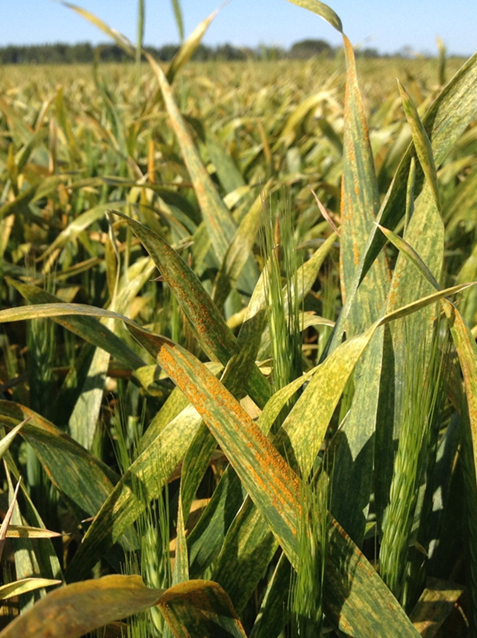Exotic incursions of the yellow rust pathogen into Australia
New insights into the spread and evolution of yellow rust at the continental scale

New research paper in Molecular Ecology: https://onlinelibrary.wiley.com/doi/10.1111/mec.16182
Abstract
This paper is based on a comprehensive and unique study of the wheat yellow (stripe) rust pathogen in Australia, using a combination of genotypic, phenotypic and genomic analyses. Using extensive alignment efforts based on an extensive world-wide stock collection of reference isolates hosted by GRRC, Denmark, and eight Pst isolates representing putative exotic incursions into Australia, the Australian isolates could be assigned to four previously defined genetic groups, PstS0, PstS1, PstS10 (new in 2017) and PstS13 (new in 2018). PstS13 is now the most prevalent genetic group in Eastern Australia, and it has shown very different and divergent epidemic potentials on important and widely grown wheat and triticale varieties compared to previous groups, including PstS10.
Overall genomic variation of representative Pst isolates from each genetic group were analysed by comparative genomic analyses, which showed that isolates within the PstS1 and PstS13 genetic groups were clearly separated, and distinct at the whole-genome level from isolates belonging to PstS0 representing the original incursion of yellow rust into Australia in 1978. Based on history of first detection and prevalence in contemporary populations elsewhere in the world, Europe is the likely geographic origin of PstS10 and PstS13, although an origin of PstS13 in South America, where this group was first detected in 2017, could not be excluded. We further explored variable gene content, including putative effectors, representing both shared but also unique genetic changes that have occurred following introduction, some of which may additionally account for local adaptation of these isolates to triticale.
The study emphasized an impact of choice of reference genome for the separation of particular genetic groups in the phylogenomic analyses, e.g., PstS10 and PstS13, despite these have distinctly different epidemiological features and SSR profiles. Whereas genomic models based on concatenation of consensus sequences of variant genes using a new haplo-phased reference genome (PST-104) separated PstS10 and PstS13, this was not the case with different gene models that used an older North American genome reference, which has been widely used in recent genomic diagnostic approaches, e.g., the MARPLE pipeline based on 242 predefined variant genes (Radhakrishnan et al., 2019).
Further reading:
- Park et al., 2020. Confirmation of the exotic origins of two pathotypes of the wheat stripe rust pathogen detected in 2017 and 2018, and their impact. Cereal Rust Report 2020, vol. 17, 4. Plant Breeding Institute, University of Sydney.
- Hovmøller et al., 2021. GRRC report of yellow and stem rust genotyping and race analyses 2020. Aarhus University, Denmark
- Website of Global Rust Reference Center: www.wheatrust.org
Contact:
E-Mail: Mogens.hovmoller@agro.au.dk. Direct phone: +45 87158129